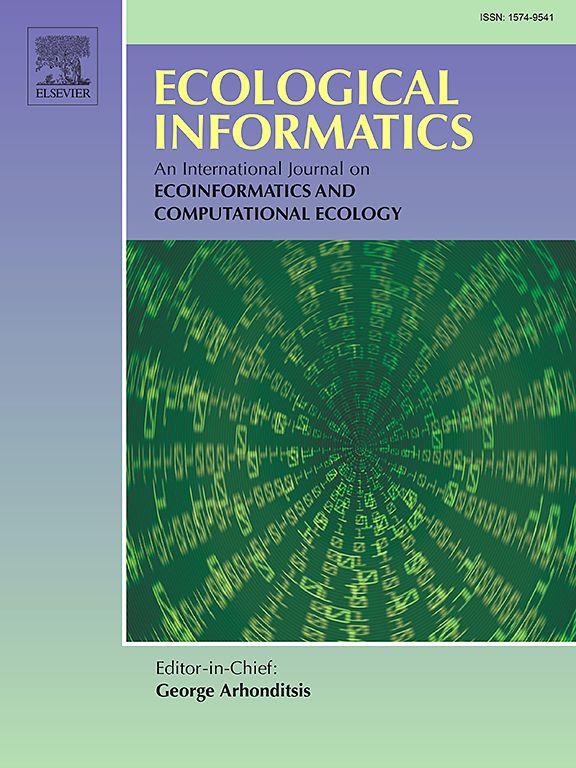DeepBioFusion: Multi-modal deep learning based above ground biomass estimation using SAR and optical satellite images
IF 5.8
2区 环境科学与生态学
Q1 ECOLOGY
引用次数: 0
Abstract
Accurate estimation of forest above-ground biomass (AGB) is essential for ecosystem conservation, sustainable forest management, and mitigating climate change and wildfire risks. Traditional methods, such as manual field surveys, are labor-intensive and limited in scope. This study presents DeepBioFusion, a multi-modal deep learning framework that first estimates AGB for validation as ground truth generation by using LiDAR-derived tree heights and a Tree Species map, employing allometry equations to relate tree height to Diameter at Breast Height (DBH). After this initial estimation, the framework is trained to predict AGB using high-resolution optical imagery and multiple bands of Synthetic Aperture Radar (SAR), including X, C, and L bands. The use of SAR bands enables improved canopy penetration, particularly in dense and cloud-covered forests. DeepBioFusion leverages the complementary strengths of SAR and optical data to enhance the accuracy of biomass predictions. Benchmarking against models like ResNet50 and Transformer, the proposed model demonstrates superior performance in AGB estimation across diverse forest environments. This study offers a scalable, cutting-edge approach to biomass monitoring, advancing efforts in climate change mitigation and sustainable forest management.
DeepBioFusion:基于多模态深度学习的地面生物量估算,使用SAR和光学卫星图像
准确估算森林地上生物量(AGB)对于保护生态系统、可持续森林管理以及缓解气候变化和野火风险至关重要。传统的方法,如手工实地调查,是劳动密集型的,而且范围有限。本研究提出了DeepBioFusion,这是一个多模态深度学习框架,首先通过使用激光雷达导出的树高和树种图来估计AGB,并使用异速生长方程将树高与胸径(DBH)联系起来,以此作为地面真相生成的验证。在初始估计之后,对该框架进行训练,使用高分辨率光学图像和合成孔径雷达(SAR)的多个波段(包括X、C和L波段)预测AGB。使用SAR波段可以提高树冠的穿透能力,特别是在茂密和云雾覆盖的森林中。DeepBioFusion利用SAR和光学数据的互补优势来提高生物量预测的准确性。通过对ResNet50和Transformer等模型进行基准测试,所提出的模型在不同森林环境下的AGB估计中表现出卓越的性能。这项研究为生物量监测提供了一种可扩展的前沿方法,促进了减缓气候变化和可持续森林管理的努力。
本文章由计算机程序翻译,如有差异,请以英文原文为准。
求助全文
约1分钟内获得全文
求助全文
来源期刊

Ecological Informatics
环境科学-生态学
CiteScore
8.30
自引率
11.80%
发文量
346
审稿时长
46 days
期刊介绍:
The journal Ecological Informatics is devoted to the publication of high quality, peer-reviewed articles on all aspects of computational ecology, data science and biogeography. The scope of the journal takes into account the data-intensive nature of ecology, the growing capacity of information technology to access, harness and leverage complex data as well as the critical need for informing sustainable management in view of global environmental and climate change.
The nature of the journal is interdisciplinary at the crossover between ecology and informatics. It focuses on novel concepts and techniques for image- and genome-based monitoring and interpretation, sensor- and multimedia-based data acquisition, internet-based data archiving and sharing, data assimilation, modelling and prediction of ecological data.
 求助内容:
求助内容: 应助结果提醒方式:
应助结果提醒方式:


